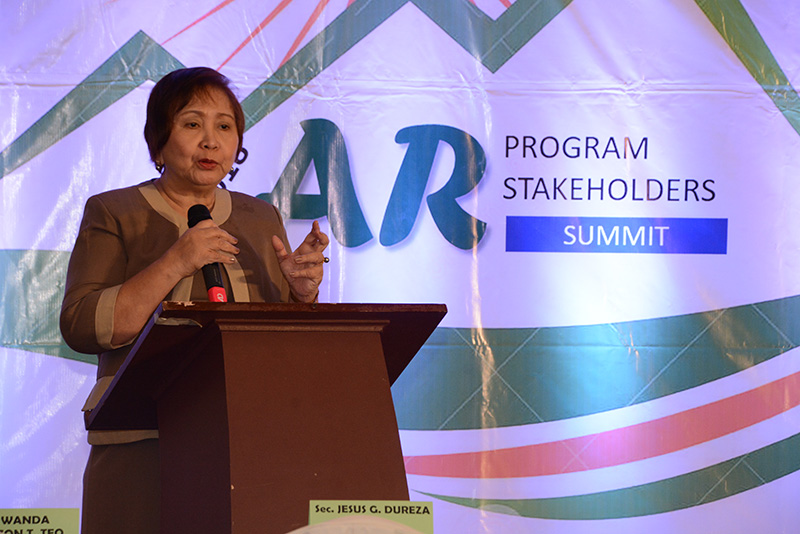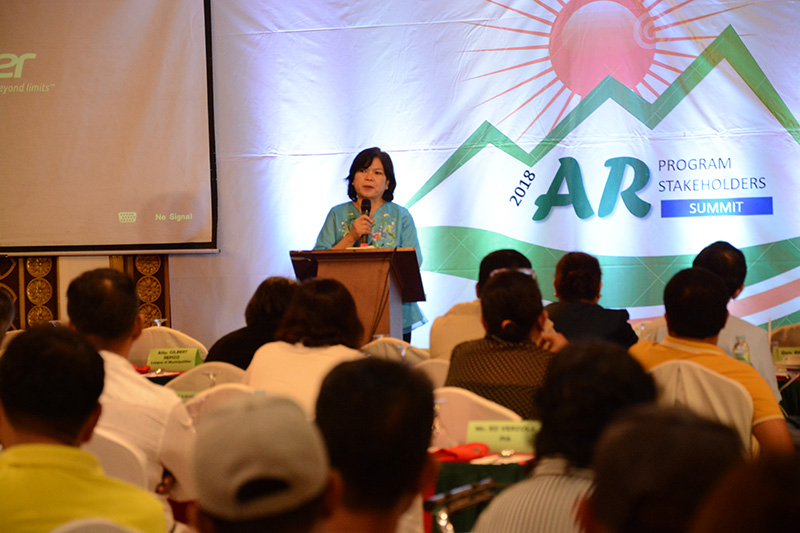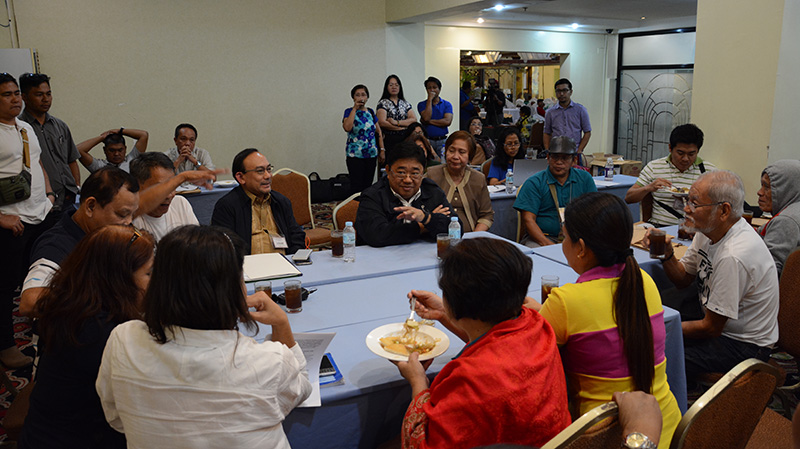Nearly 1 million hectares of farmlands eyed for CARP coverage
 ANGELES CITY – President Rodrigo R. Duterte can make good of his promise to uplift the standards of living of landless farmers and farmworkers by placing under the Comprehensive Agrarian Reform Program (CARP) close to a million hectares of agricultural lands that have evaded coverage after the land acquisition and distribution program elapsed in June 2014.
ANGELES CITY – President Rodrigo R. Duterte can make good of his promise to uplift the standards of living of landless farmers and farmworkers by placing under the Comprehensive Agrarian Reform Program (CARP) close to a million hectares of agricultural lands that have evaded coverage after the land acquisition and distribution program elapsed in June 2014.
Department of Agrarian Reform (DAR) Secretary John R. Castriciones said the President could make it happen through the Presidential Agrarian Reform Council (PARC), of which he is the chairman.
Castriciones led the convergence of 141 agrarian reform stakeholders from various people’s organizations (POs), non-government organizations (NGOs) and civil society organizations (CSOs) from all over the country, and 106 officials of DAR from different regions and provinces.
The gathering, dubbed as the 2018 National Summit of Agrarian Reform Stakeholders, was held at the Stotsenberg Hotel in Clark Freeport Zone on January 25 to 26.
The summit served as a participatory process and consultation mechanism for all stakeholders of CARP to discuss the continuing and emerging issues, concerns, inputs, and recommendations. It was also aimed to make the agrarian reform program of the government fully responsive to the beneficiaries.
It was also aimed to make the agrarian reform program of the government fully responsive to the beneficiaries.
“Other than the Congress, the PARC also has the power to revive the CARP’s land acquisition and distribution component by coming up with an order to that effect,” Castriciones told the media in a press conference during the two-day summit.
The new DAR chief added that Republic Act 9700, also known as the CARP Extension with Reform (CARPer) Law, set June 30, 2014 as the deadline for the DAR’s land acquisition and distribution program, but the Department was allowed to proceed processing the distribution of 584,000 hectares of farmlands that had been issued with NOCs before the deadline set in.
He said the deadline-setting provision of the CARPer Law does not affect the DAR’s provision of support services to agrarian reform communities and the adjudication of agrarian cases.
All in all, the DAR supposedly would have about 1.5 million hectares of agricultural lands still up for distribution, counting the 620,000 privately owned farmlands that had evaded CARP for not being issued with notices of coverage (NOCs) within the five-year CARP extension period, from June 2009 to June 2014, and the 300,000 hectares of government-owned lands under the jurisdiction of some government agencies, Undersecretary for Legal Affairs Luis Meinrado Pangulayan said.
 Pangulayan said the discussion is going on between the DAR and the DENR about the transfer of jurisdiction of the more than 200,000 hectares of previously forest, timber, and mineral lands but are now reclassified as agricultural.
Pangulayan said the discussion is going on between the DAR and the DENR about the transfer of jurisdiction of the more than 200,000 hectares of previously forest, timber, and mineral lands but are now reclassified as agricultural.
Besides the DAR, the DENR is also a CARP implementing agency that distributes forest, timber and mineral lands to farmer-beneficiaries.
Pangulayan said the vast banana plantation inside the Davao Penal Colony (Dapecol), which is under the jurisdiction of the Department of Justice (DOJ), and other similarly government-owned reservation areas are among those that are now subject of talks between DAR and the concerned government agencies.
#AgrarianReform #DAR4Farmers #Land4Farmers #PartnerForChange #ComfortableLifeForAll #CARP@30:DARe2Change
